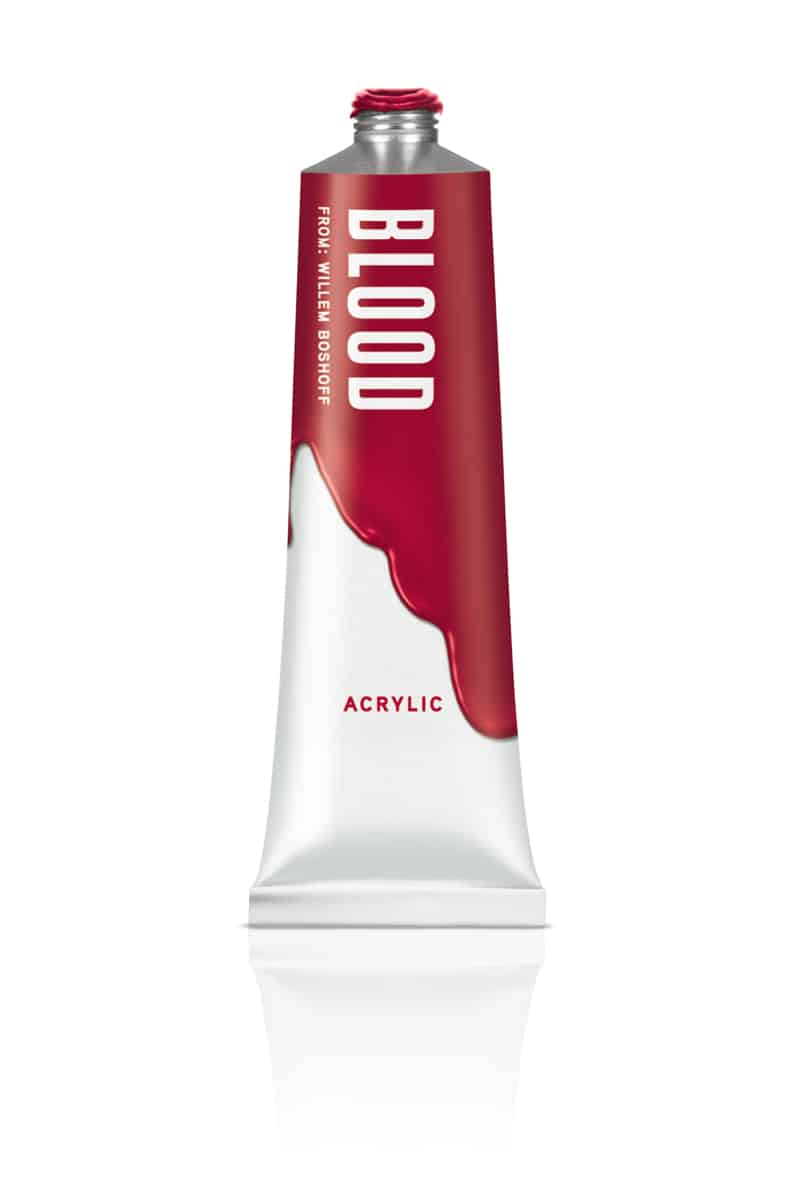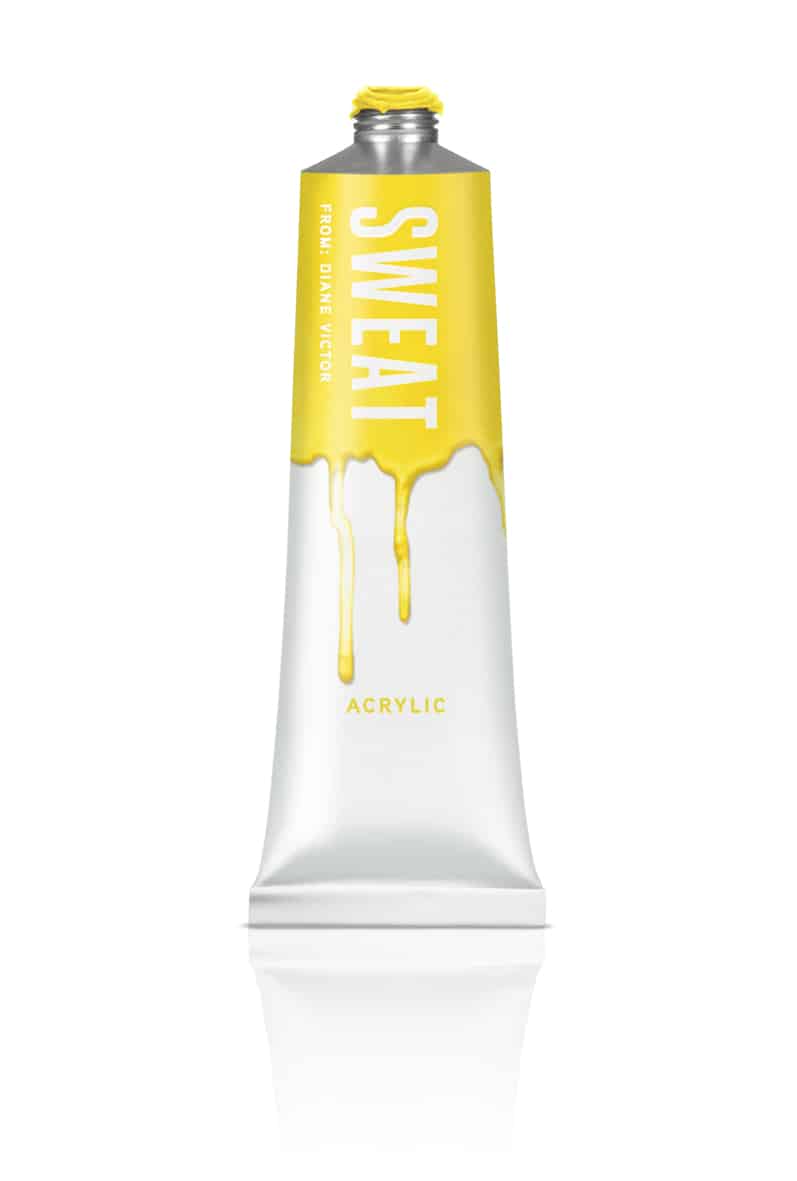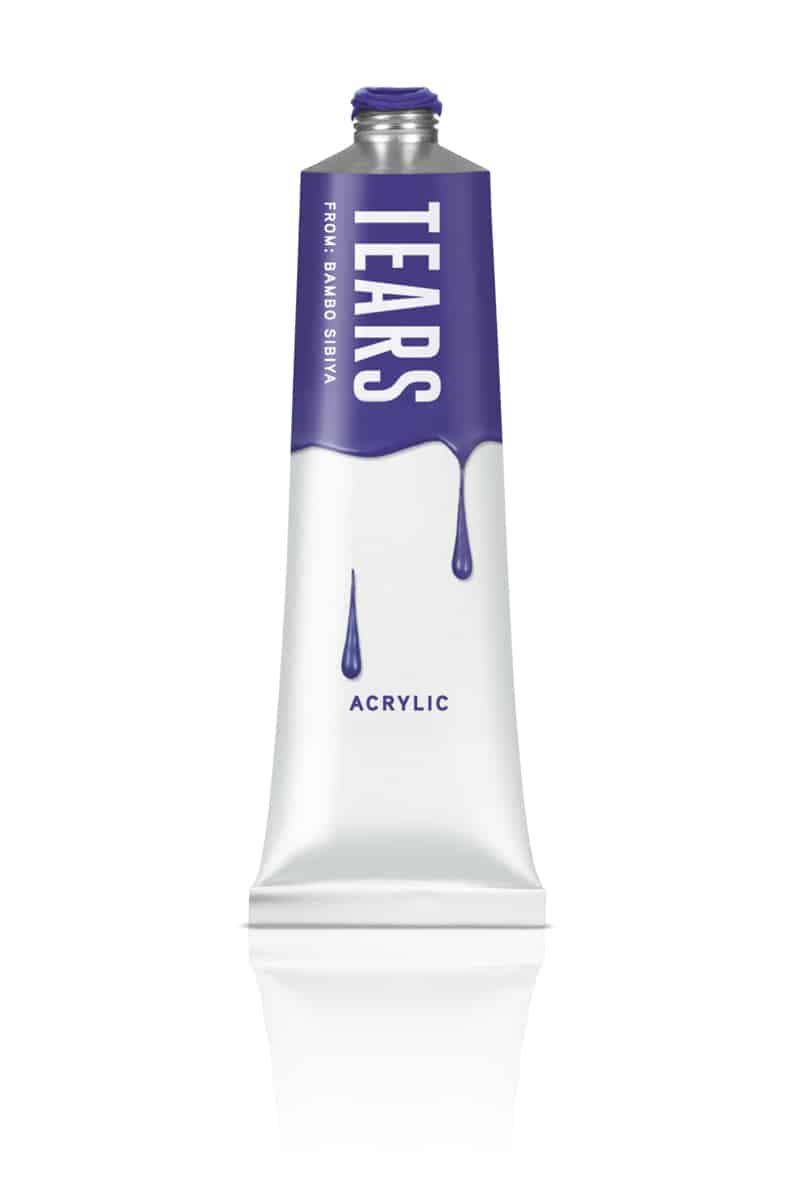Absa has adopted a compelling creative campaign to promote the 29th edition of the Absa L’Atelier art competition. The campaign concept, Great art takes blood, sweat and tears, comprises a number of different elements – the most provocative of which is a series of acrylic paints made from the actual blood, sweat and tears of renowned local artists Willem Boshoff, Diane Victor and Bambo Sibiya.
The core idea behind the campaign is that producing great art is not something that just happens. It is a process that sees the artist putting everything they have into their work through the intense effort, dedication and raw emotion that it takes to bring a concept to life. If young, emerging and aspiring artists – the competition’s primary target audience – put all this into their work, they too will prosper.
This message has been distilled into the three elements that every artist has metaphorically sacrificed so their creative ideas might see the light of day: their blood, their sweat and their tears. A strong visual reference has been assigned to each of these elements/bodily fluids: red (blood), yellow (sweat) and blue (tears), the primary colours that when mixed together can make up any colour.
In an effort to make the concept more tangible, artists Willem Boshoff, Diane Victor and Bambo Sibiya agreed to donate their blood, sweat and tears so that paint in these colours could be made. Working with Lancet Laboratories, samples were taken from the artists, processed and cleaned, to ensure they were free of bio-hazardous material. These were then included in the corresponding coloured paint, which was made by hand by Zellen Art Products, Cape Town.
For the red paint, conceptual artist, Willem Boshoff, donated his blood. At the lab, Boshoff’s DNA was extracted from the cells in his blood and re-suspended in a buffer solution. This ensured that the essence of the artist was maintained (through the DNA) but that any potential infectious risks to others (through pathogens in the blood) were removed.

Fine artist and printmaker, Diane Victor donated the sweat needed for the yellow paint. Gauze swabs were placed under her arms and she was wrapped in a sauna blanket, typically used at health and beauty spas that were heated up. The gauze was then placed in a collection bottle with a buffer solution and vortexed to force the sweat out the gauze and into the solution.
A sweat sample was collected and the sample contains no bio-hazardous material.
A sweat sample was collected and the sample contains no bio-hazardous material.

Finally, for the blue paint, printmaker Bambo Sibiya donated his tears. Paper Tear Flo strips, usually used by ophthalmologists to diagnose dry eyes, were placed in Sibiya’s eyes. Onions and menthol balm were then used to make the artist cry, with the tears being drawn up into the strips. The strips were placed in collection tubes, buffer solutions added and the tubes vortexed to extract the tears into the buffer solutions. The few viral infections (like cold and flu viruses) that could possibly be spread via tears were rendered non-infectious through the extraction process.

These processed samples were then used in the manufacture of the paints, a process jointly undertaken by Willem Prinsloo of Zellen Art Products, and Tracey-Lauren Milne from The Jupiter Drawing Room Johannesburg. The challenge was to develop colours that were not usually part of artists’ typical palettes but that still represented blood, sweat and tears. The colours were mixed using existing pigments with the result that ‘blood’ is a deep red with Alizarin Crimson/Rose Madder undertones; ‘sweat’ is a dark yellow, created from yellow, Phthalo Blue, Naphthol Red and Titanium Dioxide; and ‘tears’ is a coral blue, created using Ultramarine Blue.
Boshoff said it was fitting that the artists were asked to donate their blood, sweat and tears. “We all feel that we give our blood, sweat and tears every day just by making art, because it’s so difficult. I think the idea of putting this in a tube of paint is a noble one – I almost like it better than all the other fanciful materials that must be in the paint! It brings us down to earth,” Boshoff notes.
Similarly, Sibiya said the whole process felt familiar to him, in a sense. “When I gave my tears, it didn’t feel strange to me at all, because as artists we tell our stories on a daily basis, and put our dirty laundry outside for all to see. We don’t care how many obstacles we face, at the end of the day, to get the pieces that we want, we have to give our blood, sweat and tears,” he says.
Victor was only happy to donate her sweat for the process, and hopes it might inspire artists to produce great art. “Because ultimately,” she says, “I think the only way you can define great art is if in 100 years’ time, somebody remembers you.”
These limited edition Absa L’Atelier acrylics are now available and will be sold online through deckledge.co.za as well at various participating outlets, which can be found on absalatelier.co.za These tubes will be made available in packs of the three colours and a donation of R100 (one hundred rand) will get you a pack.
The paints will also be used in a series of paintings, created by past Absa L’Atelier winners and finalists. These works will be exhibited at the Absa Gallery in June 2014. Proceeds from the paint and the sale of the artwork from the exhibition will go to Assemblage, a non-profit organisation involved in promoting artistic innovation and collaboration in the visual arts through peer mentoring groups, workshops, group exhibitions and other collaborative projects.
Absa realises the value of blood beyond its significance in the creative process, and is aware of the demand for blood in South Africa. It is for this reason that it has long had a partnership with the South African National Blood Service and regularly hosts blood drives at its head office and other selected regional offices. In the last quarter of 2013, Absa will embark on an internal campaign to actively increase blood donations among staff.
A significant change to this year’s Absa L’Atelier art competition is the entry mechanic. For the first time ever, only online entries logged via absalatelier.co.za will be accepted. This means there will be no more paper-based entries. We encourage artists to enter online and for those who do not have access to the internet, provision will be made at the collection points.
Dr Paul Bayliss, curator of the Absa Gallery, says: “Absa understands that it takes hard work, effort and dedication to bring an art piece to life. This can be seen through the works of previous Absa L’Atelier participants Willem, Bambo and Diane, who all were intimately involved in putting this innovative and eye-catching campaign together. We look forward to all our 2014 entries and encourage the artists to start working on their art pieces, to ensure they put all their efforts therein and submit works of the highest quality.”
Since entries only open on 2 January 2014, Absa has launched an online lead form where interested members of the public and prospective entrants can submit their details to get competition updates, entry details, advice on what constitutes great art and all the news about the groundbreaking blood, sweat and tears campaign.
The Absa L’Atelier Art Competition, in partnership with the South African National Association for the Visual Arts, is rated as the longest-running and most influential art contest on the continent. It pays homage to both established and emerging young local artists and their compelling artistic vision.




